Elon Musk created a device for connecting the brain with a computer: how it works. PHOTO, VIDEO
How far has Ilon Mask gone with his unusual design? Interview with a neuroscientist Mikhail Lebedev, from whose laboratory Mask employees left.
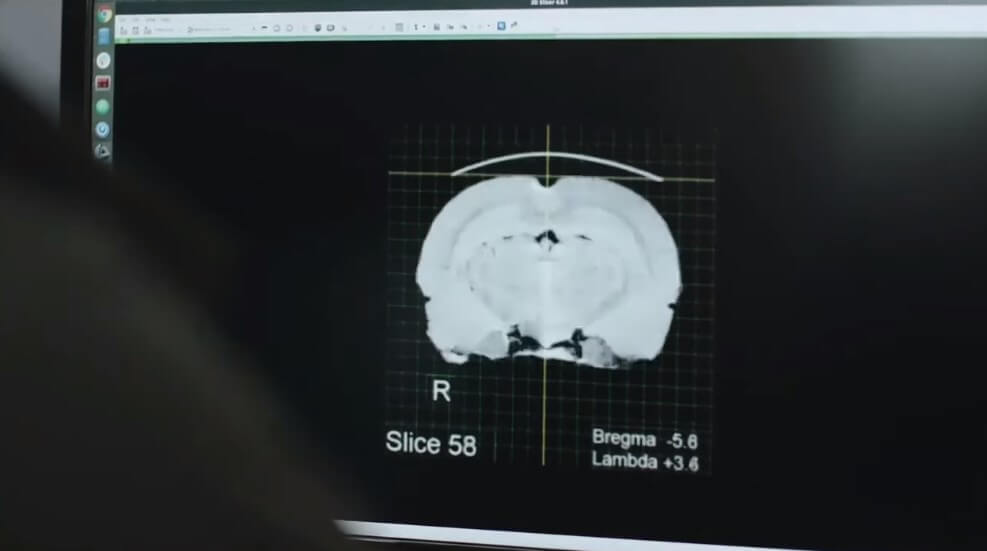
Photo: video frame YouTube / ADVEXON TV
This summer, at a big presentation in California, Ilon Musk showed a prototype of a device that Neuralink, founded by an entrepreneur, developed for two years behind closed doors. This device is embedded in the brain and is capable of transmitting information about its activity to the computer and vice versa. Musk revealed a lot of technical details, but much remained unclear: what experts really came up with, how the company is going to earn, what patients with Parkinson's and Alzheimer's diseases will get. "Medusa"Talked about this with Mikhail Lebedev, a neuroscientist who has not only been creating and researching such devices on monkeys for many years, but also a person from the laboratory of which some Neuralink employees left, even its president Max Khodak.
In March 2017, it became known that Elon Musk had created a company whose task would be to “connect the brain to the computer”. There was no details about the development for two years. In July 2019, Musk organized a large presentation at the California Academy of Sciences, where he spoke about the prototype.
The main task, according to Mask, is to turn a complex operation of implanting a chip into the brain into something that, in its consequences, is similar to laser vision correction. The idea is that, like with laser vision correction, the patient could return to normal life on the day of the operation, and after a couple of weeks to completely forget about some medical restrictions associated with penetration into the brain.
As a matter of fact, in terms of user characteristics, the new neurointerface looks more like much simpler analogs like electrodes for recording an encephalogram - the entire internal “strapping” of the chip is hidden under the skin, and data and power are exchanged through a wireless magnetic coil. Until now, invasive neural interfaces have looked much more cumbersome.
The emphasis on the ease and ease of use of the neural interface is associated with the desire of the Mask to turn it from a highly specialized medical device for seriously ill people into a new gadget that can interest a wide audience. While this desire seems too fantastic, but the intention of the Mask is clearly directed in this direction.
As for the device itself, it is also quite innovative: instead of the traditional square chip in the Mask neurointerface, the electrodes are divided into 96 flexible threads, which in total carry 3072 individual channels that can both register and stimulate the electrical activity of the brain. For implantation of threads, a specially developed robot is used. It is able to insert three strands per minute into the nervous tissue. Pre-processing of the neuron signal even before it enters the computer occurs directly inside the chip - on specially designed microcircuits for this.
The company immediately published other characteristics of the new device and the results of its testing on rats in a preprint (the details of which, it seems, are part of a conscious strategy to attract personnel from the academy). However, despite the sudden openness, many questions remain that it makes no sense to look for answers there - for example, how the company is going to make money in the market, where at least one such project has already failed.

Photo: video frame YouTube / ADVEXON TV
- For several years, Neuralink worked completely closed, and before the press conference no one knew what exactly they were doing there. Now they have come out to the public and in some detail - which is rare for a technology company - have told what kind of device they got. What is the most breakthrough in this neurointerface?
- There are many technical breakthroughs. They developed a special robot - a “sewing machine”, which allows you to effectively implant threads with electrodes into the brain. The idea is really good, because they usually do it like this: they try to insert into the brain simultaneously under a hundred electrodes in the form of a single chip. And then the "Rakhmetov effect" arises - the electrodes simply do not mechanically enter the nervous tissue. There is even a technique by which they are driven there by a hammer blow - but this, as you might guess, is somewhat traumatic for the brain.
At Neuralink, they delegated the work of implanting individual thin electrodes to a robot, which quickly and efficiently inserts them one at a time, and the operator can even accurately select the implantation points so as not to damage the blood vessels. In addition, they have new and good amplifiers, microcircuits for signal processing, and a stimulation system.
Speaking scientifically, I actually do not see any supernova ideas here. In general, here are two well-known main ideas: the first is that to create a truly revolutionary device you need to record not surface electrical activity, not to come up with some new EEG, not to do tomography, but to go directly to the brain - to make an invasive implant . The second idea boils down to the fact that the new device should be as wide as possible in spatial coverage, have as many channels as possible. It is desirable - an order of magnitude more than it turned out so far. However, no major breakthrough has yet occurred - in our laboratory, for example, the maximum achievement was about two thousand electrodes implanted in the brain of one monkey. This is not much different from the 3072 electrodes in the new device.
More importantly, thanks to Mask, a company with money appeared in this area that wants and can actively develop the technological part of the project, the device itself. It is known that where new technologies appear, scientific breakthroughs will inevitably appear over time.
On the subject: Ilon Mask promises to launch free Internet all over the world: in Russia they will fine him
- Then a reasonable question arises: how are they going to earn money on this device? Who might need to implant such a thing into their brain?
- This, of course, is a very important issue. Especially because, in fact, Neuralink is not the first company that decided to make a commercial neural interface. A very similar device - with an invasive recording, with a large number of electrodes, aimed at helping paralyzed people as far back as 15 years ago, tried to make another company - BrainGate, founded by John Donehyu from Brown University. And their business did not go well: the first money ran out rather quickly, they could not attract new ones, the clinical trials that had already been started had stopped - and the company was outbid. They did not go bankrupt, but a vivid success story did not happen.
If you look at Neuralink as a business, the main question is whether they will be able to build a viable business model. Maybe they will succeed. The people at BrainGate, after all, were just scientists who wanted to make a startup. Here the situation is different: Elon Musk knows quite well how business works and, perhaps, the best person on the planet is able to think strategically, work with long projects. Therefore, it is possible that he will manage to bring to mind what BrainGate failed to do.
Be that as it may, I think that the first task of Neuralink will be to capture the market for equipment for neurobiology - all these electrodes, amplifiers, signal processing equipment. The task is not so small, and I think they will be able to force other companies out of it.
Then at some point you will have to switch to clinical research, and there really will be many difficulties. First of all, Neuralink will deal with that small population of paralyzed people who agree to implant electrodes for themselves. These are those who cannot move either with their arms or legs - it was for them that participation in clinical trials of an implantable device could be most useful.
But the number of such people, of course, is very limited. Far more are those who suffer from Parkinson's disease, even more are stroke survivors. This niche is very large, but it may take decades to see how the new device shows itself in the clinic. Probably, in the near future, Mask will not work for medical applications, but to publish at least something as quickly as possible. Therefore, I do not think that we will all be walking with an electrode from Mask in the near future.
“Of course, not every person wants to have a stimulating electrode inserted into his brain to a depth of 15 centimeters”
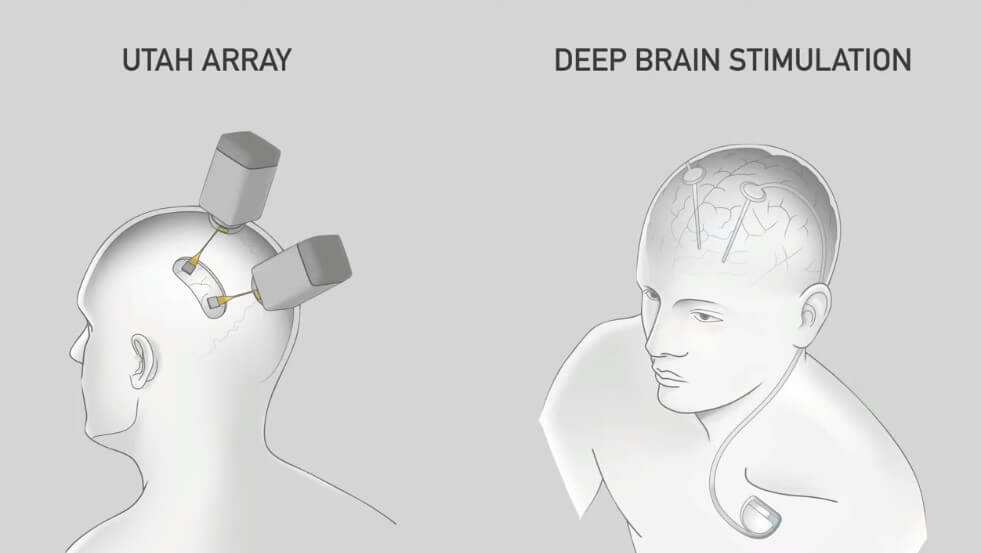
Photo: video frame YouTube / ADVEXON TV
- How can machine-brain interfaces be useful for people with Parkinson's disease and stroke?
- Parkinson's disease is a neurodegenerative disease, which is accompanied by the appearance of pathological electrical activity: the brain begins to generate certain waves that interfere with its work. As a result, a tremor occurs in a person, he hardly initiates movements, other symptoms appear. The harm from these self-oscillations is such that, it turns out, you can even sacrifice part of the brain if it is their source - there are works in which part of the deep brain structure is removed during Parkinson's disease and it makes it easier for a person.
Another approach is the use of deep brain stimulation using special electrodes. What happens? High-frequency stimulation suppresses pathological rhythms and it becomes easier for a person. No one knows how it works in detail, but in medicine it is a common thing: if it works, then it’s good. Not every person, of course, wants to have a stimulating electrode inserted into his brain to a depth of 15 centimeters. But if the situation goes far, then sometimes they resort to it, and it really helps.
Here the question arises: what if not just stimulating the brain, but also recording its reaction, look at what happens during stimulation, and maybe even include feedback. For example, to include a stimulant only when these pathological fluctuations occur? Here, a device like the one introduced by Neuralink can be very useful. The use of the new neural interface for Parkinson's disease is the introduction of “smart” stimulation instead of the rather “dumb” stimulation that is now used in treatment.
While the Neuralink neural interface is not suitable for this task - they work only with the cerebral cortex, and with Parkinson's disease, deep stimulation is required. But you can move on to deep stimulation rather quickly; this is just no fundamental problem.
- And what about the stroke?
- In a stroke, some - usually quite large - area of the brain is affected, and with it, a person loses the ability to do those things that are tied to this area. However, there is hope that even after such a lesion, the brain can cure itself to some extent: it has great plasticity, due to which over time, areas not affected by a stroke can take on the function of the affected.
But if a person simply lies and does not do anything, then there will be no plasticity: you need to actively train in order for it to show itself. It is hoped that neural interfaces can help a lot here, since they can give the patient the opportunity to feel the feedback.
- For example, if a person learns to control his limbs again after a stroke, does the neural interface push him in the right direction?
- Exactly. Back in the middle of the 20th century, Donald Hebb theoretically predicted, and then it was experimentally proved that plasticity - that is, in this case, a change in the "strength" of connections between neurons - occurs when the neuron itself is active and a signal from another comes to it at that moment neuron. For stroke patients, this means that with the help of the neural interface, you can catch the onset of neuronal activity in the brain and at the same time stimulate neurons somewhere in the periphery. And when the signal from the periphery reaches the brain, the connection between neurons will be fixed, which will accelerate learning. The idea is something like this.
In addition, you can imagine the work of the neural interface in a different way. Suppose, as a result of a stroke, a certain region A in the brain disappeared, it is no longer there. We can insert a recording device into region B and region C, and instead of region A we can insert a computer that will replace its work. This scenario is also possible, but this is a story about a very distant future.
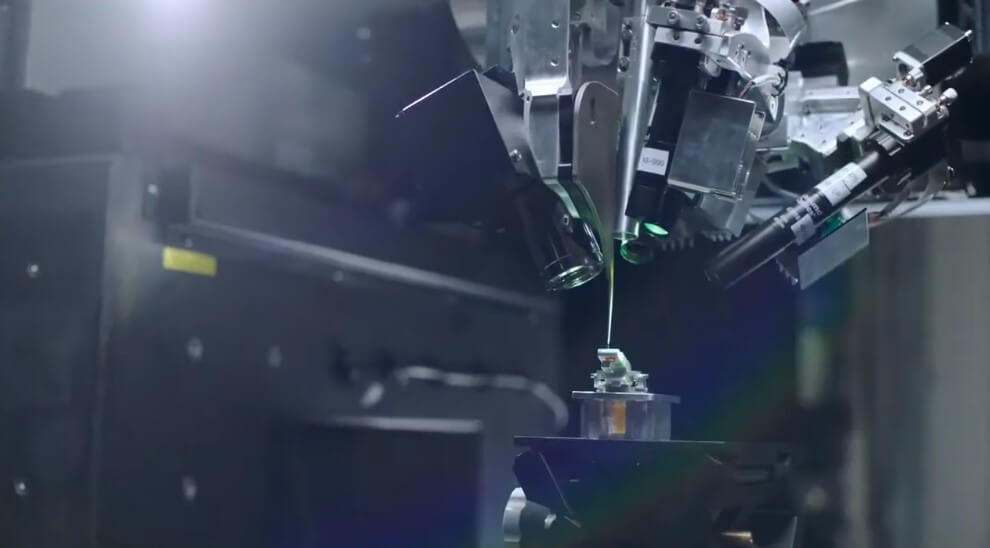
Photo: video frame YouTube / ADVEXON TV
- If you return to the present, it seems that now such a device is most needed for people with paralysis - with paraplegia, quadroplegia, and so on. However, today, neural interfaces are almost never used to control robotic devices, instead of them myography is used - on the surface of the skin, where some muscle activity still remains, the electrodes are fixed, and it is their signal that is processed and transmitted to electronic devices. Why?
- Indeed, exoskeletons are developing very rapidly. Even Russia has its own developments - for example, the Exoatlet project. Naturally, the idea arises of combining the implantation of neural interfaces with the use of exoskeletons in order to restore a person's ability to move. If the Neuralink team manages to do this, then it will be, firstly, an important demonstration of the capabilities of their device, and secondly, it can lay the foundation for the treatment of paralysis in the future.
The myography currently in use is a good, but rather limited approach. Recording a brain signal directly is always more interesting. If only because the brain represents movement as a kinematic process, but for muscles it is a dynamic process. By recording the brain signal, you can calculate how a person feels himself in space, what action he wants to perform, how he is going to move his limbs. From the point of view of myography, movement is simply a contraction of muscles that have time and strength. This means that in some experimental, strictly controlled conditions, myography can work, but if a person at least slightly changes his position, then all your data will “float” and you will not be able to parse anything else in the signal that you receive with myography . This is a very serious flaw.
On the subject: Where Ilon Mask took the money for the first development
Why, then, are not invasive interfaces used to help paralyzed people? Because any invasive interface is always technically difficult, there is a risk of infection, a risk of implant rejection. The brain generally always struggles with the introduction of foreign objects, including electrodes.
When we, for example, work with monkeys and insert electrodes to a new animal, then the first two weeks usually everything goes fine. And then the problems begin: gliosis develops, that is, the electrodes are covered with glia cells, as a result, the signal from neurons ceases to “finish off” to the electrodes, we stop recognizing it. Often, even in the best works, when scientists talk about big breakthroughs, it can be read between the lines that they had serious problems with the quality of the signal from the neurointerface. Therefore, the struggle for biocompatibility is very important. And although Musk did not say anything about this at the presentation, they will certainly encounter these problems. Even more depends on whether they can achieve biocompatibility than how many electrodes they can squeeze into their device or which microprocessors are there.
- Implantation of a chip in the brain looks like an operation that you can agree to at most once in a lifetime. If these neural interfaces also have to be changed regularly, it seems that the whole project will fail. You have vast practical experience with implantation - how long can the neural interfaces work in the brain? Will Neuralink help make their electrodes so flexible?
- Now about how long-lived the device will Mask, we do not know anything. In our experience, these terms can be very different - our record was about eight years, while some devices stop working after six months.
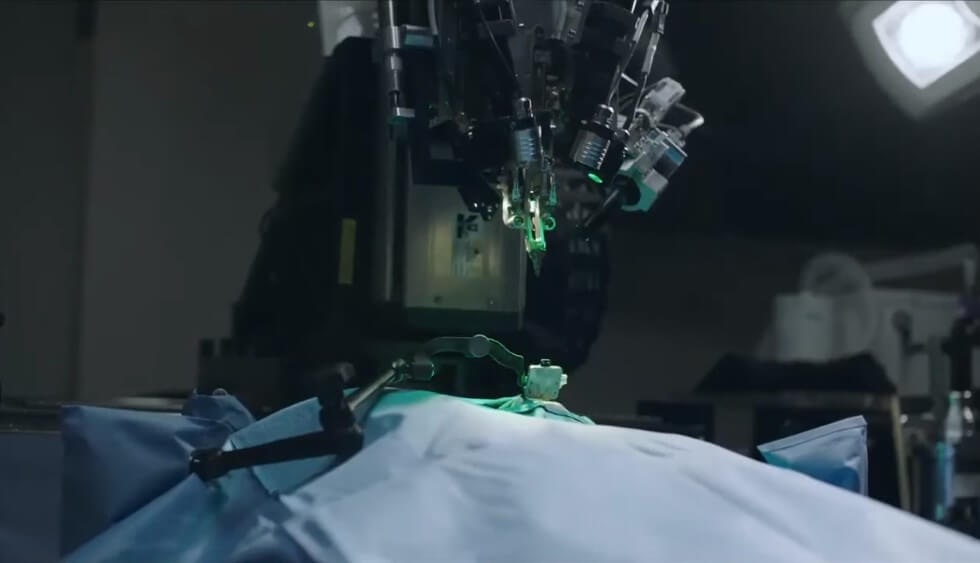
Photo: video frame YouTube / ADVEXON TV
Say, among the neural interfaces there is such a popular family of devices as the Utah array - this is such a plate from which silicone needles stick out with electrodes that are inserted on the surface of the cortex. However, the very presence of such a plate for the brain is not very pleasant - it “feels” a foreign object and tends to fence itself off from it with connective tissue. When this happens, the connective tissue simply pushes the chip out of the brain and the data collection ends there. We have refused such devices in our work on monkeys, and we use longer and more flexible electrodes, which usually maintain good data quality for much longer. So flexibility really gives an edge. Its importance has been understood for a long time - because the brain is not motionless, it constantly pulsates, moves. However, existing attempts to make flexible electrodes have so far been far from the same level as in the new Mask device.
- If you recall everything that the creators of Neuralink talked about and try to highlight the most innovative things, what will it be? Electrode implanting robot, electrodes themselves, integrated chip for signal processing? What seems the most promising and what is dubious?
- Doubtful, I must confess, I did not see anything. The most impressive thing is the miniaturization and robotization of the process itself. As I already said, I don’t see any fundamentally new ideas behind this interface, but how it is done, how it is done at the technological level is yes, a very good level.
- If already now deep stimulation devices are widely used in the clinic (even if they are much simpler than what you described), then should it be easy for Neuralink to get permission to test its device? When will people start inserting it?
- They definitely have such intentions, they have already said that within a year they want to implant their interface to a person. Patients who have had a stroke and people with Parkinson's disease are millions of people on the planet, so the potential scope of such neural interfaces is very large. True, it must be emphasized that neither Elon Musk nor his employees mentioned stroke and Parkinson's disease as a possible field for using their device - but I am sure that they will inevitably come to these diseases.
“Even I already received some letters of this kind - implant me electrodes, I really want to become a cyborg”
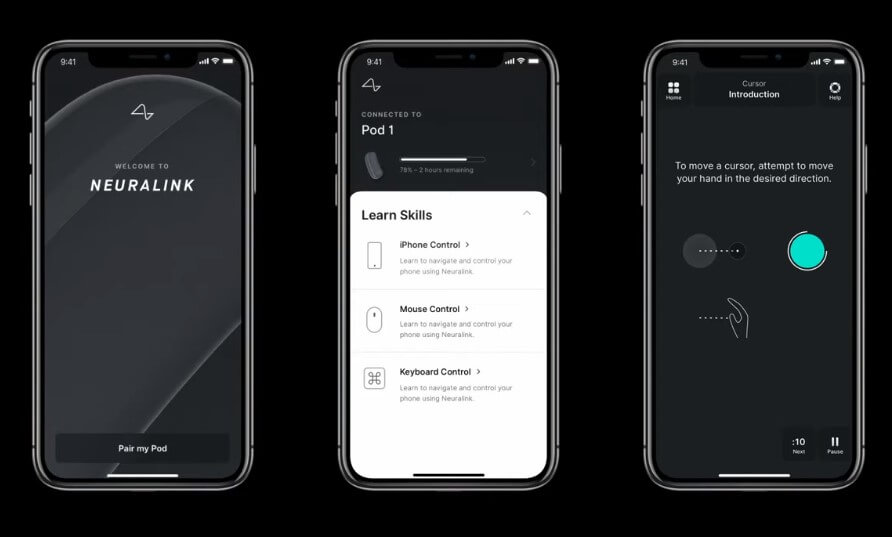
Photo: video frame YouTube / ADVEXON TV
- Musk would not be Musk if he hadn’t teased the audience with the word “cyborgization”. We have already discussed the medical uses of the device, but what can it give healthy people? Read messengers and tweet on the power of thought? Smell in the movies? See augmented reality with your own eyes, without a display? I know that at least something from this fantastic set has already been made - for example, the ability to see non-existent visual images, phosphenes that arise under the influence of stimulation.
- It all depends on how you understand "cyborgization." If this refers to reading thoughts or something like that, then I would not be afraid of this. We do not understand so well how thoughts in the brain are encoded to be read. Of course, we can find out something, it will be an interesting task, but this is a conversation about a very distant future. But as far as stimulation is concerned, it is rather simple and can be very realistic. And that's why.
Take, for example, visual prostheses that stimulate the visual cortex. Somewhere in the 70's, the first works appeared in this area, there were patients who caused phosphenes by electrical stimulation of the visual cortex. Some of the patients even learned to see the capital letters that made up of these phosphenes. After some time, these experiments stalled, and now, it seems to me, a new wave is beginning. Musk and Neuralink here could say their weighty word, because their device has a very large number of electrodes, so even if some of them are damaged by glial cells, they will have an unprecedented wide channel for transmitting information to the brain. So partial restoration of vision with the help of such a device is a very real task.
But at the same time, there are many dangers with stimulation. Because theoretically it is possible to implant electrodes into the zones that are responsible for human motivation, for pleasure - and get as a result of a guided experimental rabbit. A soldier who receives a “forward” command and obediently runs forward.
On the subject: Flying cars, smart dust, neuromorphic devices: what technologies will be developed by 2030
Technically, this is entirely possible. Stimulation is generally a much simpler thing than the task of reading thoughts. It’s all because of the very plasticity: when the brain receives external stimulation, it for him, of course, at first looks rather strange. But gradually the brain learns to understand what such signals mean and how to interpret them. When electrodes are implanted in the visual cortex, then during the first stimulation he will most likely say that he sees some strange phosphene. But if he exercises, say, a month, then the visual picture that he perceives will steadily improve. I think that it is because of this that stimulation is the main direction that Neuralink will develop.
- Given how much noise there has been around biohacking in recent years, it seems to me that a more real example will not be with cyborg soldiers, but with people who themselves will try their best to “improve” themselves with such a device.
- You know, even I already received some letters of this kind - implant me electrodes, I really want to become a cyborg. There are many who wish. Many people who want, for example, to engage in meditation and "improve" the brain. But, I am afraid, as soon as it becomes relatively safe, officials and bureaucrats will quickly intervene and begin to regulate these procedures.
- Practice shows that as soon as officials and bureaucrats begin to ban something, the procedure simply rises in price for the ticket to China. So the point is probably not when invasive interventions of this kind will be allowed, but when it really will work. What needs to happen to make it clear - has it all begun? So far they just showed the device. What should be the next big news?
- They should show the person who has this device implanted and the wires do not stick out of the head. Until now, always when an invasive interface is implanted in people, it looks pretty awful: wires, an amplifier of enormous size. If everything is as promised - a device completely hidden under the skin, recharging through induction in a coil and so on, then please - here you have a cyborg. And most likely it will be, of course, not a healthy person, but a person who needs implantation for medical reasons.
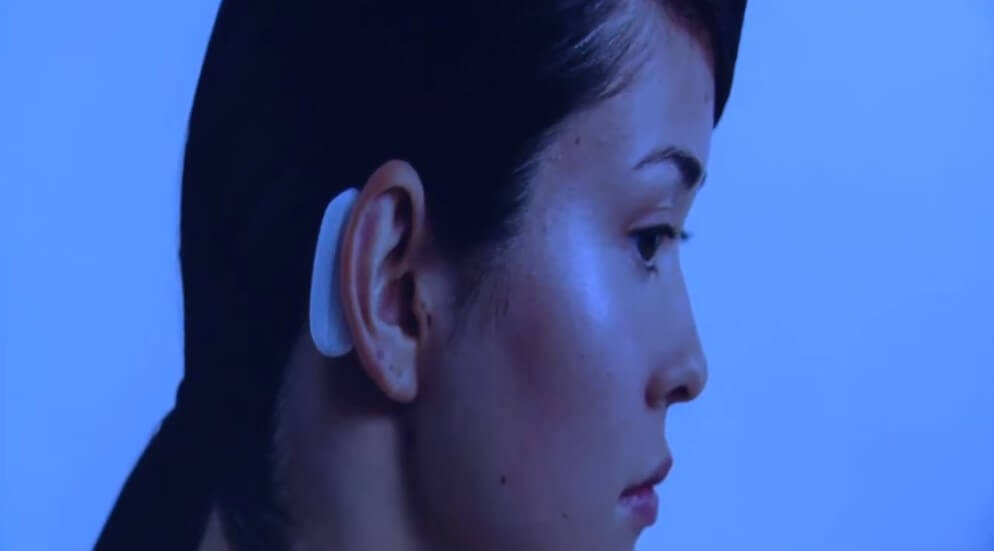
Photo: video frame YouTube / ADVEXON TV
- We have already talked about phosphenes, but can it be possible to do something similar with sound or smell?
- Yes of course. Here, firstly, you need to remember about the cochlear implant - this is the most massive and successful device in the world of neurointerfaces today. Hundreds of thousands of people in the world received a cochlear implant and restored their hearing. That is, of course, this is not a completely “real” brain-machine interface, because it transmits signals not to the brain, but to the inner ear, to the cochlea. But in terms of its design, it really is very similar to what Musk introduced, although it is much simpler.
Since cochlear implant is stimulated by the cochlea, for the brain this signal is peripheral, which means it is easier to understand. There are also experiments where the auditory nuclei of the brain itself are stimulated. And in this case, to get a good result - that is, to restore hearing - it becomes much more difficult, but it is also possible. I’m sure that not only with hearing, but also with sense of touch, the situation is about the same - here, too, with the help of a new device, it will be possible to advance greatly. The thing is that stimulation, as I said, is by its nature a simpler task than reading a signal.
- I don’t know if you noticed or not, but at the presentation where Neuralink President Max Hodak talks about the project, the first slide on which there is real data (and not diagrams or plans for the future) is a picture from your classic 2003 article of the year, dedicated to the interpretation of data from a neural interface implanted in a monkey.
- This is not surprising, because I know Max well, and he also knows our work. Actually, he was my student and worked in our laboratory when he was still studying at Duke University. He got an interest in creating machine-brain interfaces from us - he saw how we implant hundreds of electrodes in a monkey’s brain, decipher their activity, teach monkeys how to control robotic devices. Later, he decided to go in for business, organized a biotechnological startup, but now he has returned to neural interfaces and is working as president of Neuralink.
- After all, you are familiar not only with him, but also with other members of the team. For example, with Joseph OʼDoherty, who conducted experiments on monkeys at Neuralink and also studied with you. Knowing personally the guys from the company, what do you think, what spirit reigns there? Will they be able to do what they want? Will they interact with the open scientific community, the academy, or will we again learn about what happens only after a couple of years?
- In fact, the team is far from being as closed as it might seem from the outside. For example, I recently visited them and more or less they all showed me with pleasure (although I had to sign a non-disclosure agreement). And I am sure that they will interact with the academy, at least to attract scientists as consultants.
The main advantage of Neuralink now, as it seems to me, is that they, unlike us, are not dependent on grants, contests, internal squabbles, the need for publications - all those negative aspects of the academy, which in fact can greatly interfere with work. They work as a corporation, are result-oriented and want to create a specific commercial product. Perhaps this approach itself will become in neuroscience no less important innovation than their new device.
- Well, that is, if you were a post-dock now and chose from all the possible places on the planet, would you go not to your native Duke, not to Princeton or Harvard, but to the Mask in Neuralink?
- I think yes. It is a pity that when I started my scientific career, there was nothing like this.
Read also on ForumDaily:
Nearly half of 500's most profitable US companies were founded by immigrants and their children.
Neil Amstrong's family received $ 6 million from the hospital, where the legendary astronaut died
Save thousands of lives: a young immigrant from Ukraine creates a unique DNA robot in the USA
NASA will send tourists into space for $ 35 thousands per day
Subscribe to ForumDaily on Google NewsDo you want more important and interesting news about life in the USA and immigration to America? — support us donate! Also subscribe to our page Facebook. Select the “Priority in display” option and read us first. Also, don't forget to subscribe to our РєР ° РЅР ° Р »РІ Telegram and Instagram- there is a lot of interesting things there. And join thousands of readers ForumDaily New York — there you will find a lot of interesting and positive information about life in the metropolis.











